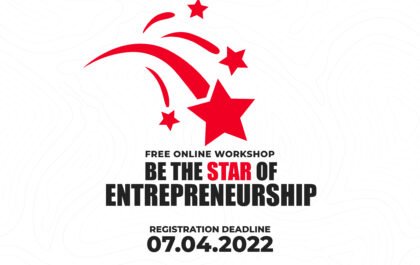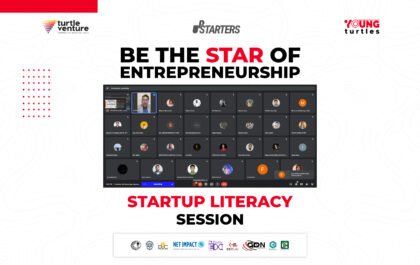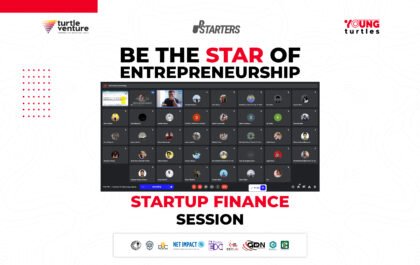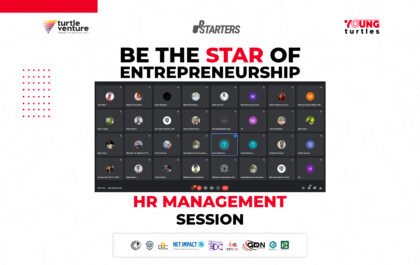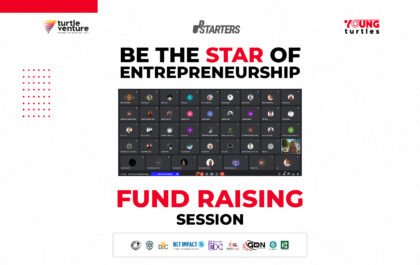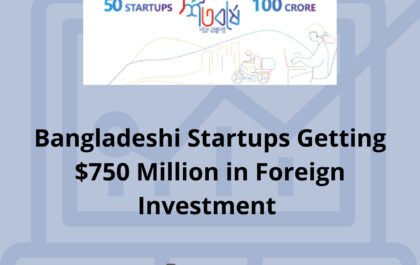“Lean Startup” is the name of a label that is an integral part of the business and vocabulary of today. Eric Ries first proposed the Lean Startup methodology in 2008. He analyzed and then described his personal experiences on the adaptation of the principles of lean governance and development to build successful high technology start-up companies. A book called “The Lean Startup” was later written by Eric Ries and published in September 2011.
What is Lean Startup ?
Eric Ries, Harvard Business School Researcher, applied the word “lean” for the purpose of waste prevention. In all processes, research and production include the identification and disposal of waste.
In short, the company starts by marketing to ask potential clients about all elements of the business model: product characteristics, prices, distribution channels and economic strategies.
The start up generates a minimally viable product (MVP) with this information gathered and as soon as possible requests customer feedback. It aims for new versions and adjusts to the optimum product on the basis of the answer obtained.
Build-Measure-Learn loop
Lean Startup cycle or Build-Measure-Learn loop is mainly a major activity in an enterprise is to turn ideas into products, to measure the response of customers and to learn whether or not something needs to be changed. This build-measure-learn cycle should be expedited by every successful startup.
Figure : The Lean Startup cycle or Build-Measure-Learn Loop.
The Lean startup cycle, called Build-Measure-Learn, emphasizes a team or company’s pace to create an idea, create a product that is less viable, measure its efficiency in the market and learn from this experience.
In short, it is the cycle of transforming an idea into a product, measuring its reaction and deciding whether it’s a good idea that needs to be left behind or a bad idea that needs to be discarded.
This cycle generates innovation as the quick iteration allows teams to define a viable means of adjusting the product so that the business model can be optimized and improved.
Lean Start-up Scheme
If you have to write a business plan fast or if your company is fairly simple and easy to explain, it is probably a lean startup plan for your format of choice. This is less a thorough plan and much more an easy summary – not more than one page sometimes.
Even if your structure is short and sweet, you should have the following elements on a lean start-up plan:
Value proposition — The value your small enterprise brings to your respective market, summarized in a clear statement.
Key partnerships, property and measures — Additional information about companions, methods for aggressive profit and assets like rental properties and capital used to create a value for your audience alongside your online business.
Customer segments, channels, as well as relationships. Who is an audience? Who’s the public? Where can you achieve them? How will you build a long-term relationship? Define your target audience, options for keeping them in touch and tips for developing customer experience.
Revenue streams—Explain and list your business’s revenue streams for money making. Kindly ensure that your cost structure strategy is defined in a quick section.
Lean start-ups do not follow traditional businesses.Rather they focus on hypothesized business models and test them rapidly. The data must not be completed but sufficient before it is proceeded. The problems are first identified and resolved before a minimally viable product is developed.
Only afterwards will it enable the contractor to present the products to clients and receive customer feedback. This entire process not only works quickly but also provides entrepreneurs with less loss.
Universal debate on the traditional business plan versus the lean startup plan. Most times, we think of a conventional format when considering a marketing strategy.But enterprise plans are available in not one, however,in two classes. Let us get to know the traditional business plan also.
Traditional Business Plan
It’s traditionally a blue print that allows you to glimpse the near future of your own start-ups, so that you can get a better understanding of the traditional plan than people who are start-ups.
You will have to pay for these areas in each conventional company plan:
Executive Overview—You should not be able to say more than two pages, here, that you and your company are, exactly what your organization is doing, exactly which industry it is, where you are (or are) located, once your business begins, when you don’t start, the way the company is going to get the money.
Business description, strategy and concept — this section contains additional information on your products and services, such as what they do, which distinguished them and made them unique, where the company idea came about, where you are at the evolutionary stage and about all your business goals and plans, along with the scheduled time limit.
Analysis of the industry— Who’s the competition? In this section, you will look at the competitions and touches of your own brands, the background of your business and why consumers can select their services within their services.
Organization and management—This section will allow you to share biographies, backgrounds and core responsibilities when you have management or staff employed.
Financial projections—This provides readers with an insight into your company cash flow. It includes a projected profit and loss area, a 12-month revenue statement, a budget for expenses and sales predictions and the revenue analysis necessary for your initiary investment. This includes a large table-heavy area. And talk about investment.
Financing application—When you are looking for investment funds, this section describes how much money will be requested and how the funding will be spent.
Appendix—Your appendix will simply list a few records, incorporate business research, corporate letters, trademark registrations, and venture agreements.
Innovations that have led light years of advances to our total quality of life have been introduce by start-ups founded by millennials ages 18-33. These lives are changed by products such as search engines, Google Maps, smartphones (iPhone), social media and software (Facebook).
The ability to consume and distribute massive amounts of information while reducing costs, time and complexity is part of these new powers. Many modern millionaires today, including Mark Zuckerberg (Facebook), Sara Blakely (Spanx) and Brian Chesky (AirBNB), have built up their businesses using lean startup canvas compared to the traditional business plan.
This new approach has replaced the traditional methodology employed by start-ups of their generation for the start-up of business plans. Although a corporate plan approach resulted in the creation of quite amazing game-changing solutions such as Costco, PCs and computers, desktop software, it did not give the founders a coherent framework for validating customer acceptance or validation of the income model, before raising considerable investments which are essential for the survival of all investors.
There are four area’s where the Lean Startup Models succeed over Traditional Business Model
It’s all about upgrading – Lean-StartUp often begins with an idea of improving or interfering with a popular product or service already successful, by making it better for a particular market “niche.” Facebook against MySpace. Napster vs. iTunes, iPod vs. Walkman can be taken as examples.
Less paperwork —Lean StartUp Model Canvas is a framework template consisting of nine boxes on one page that enables the founder to evaluate and validate the company overall to validate an idea using live interactions with target customers.
Constructs with integrated customer feedback – The core of the Lean-StartUp Model is the canvas, which supports the validation of the hypothesis by means of the continuous feedback loop. The entrepreneur, “must go outside the building” is essential for this segment to be effective. You must implement a scheme to measure your hypothesis costs with a selected group of your target customers in a budget.
Timing is everything–Lean-StartUp Model Canvas expects the entrepreneur to wait until the target customer is satisfied enough that they are prepaying for or pre-registering the new product or service, to build the complete “manufacturing release of the product.” Most of the time they can get 100s or 1000s of customer commitments.
The Lean-Start-Up Model is a relatively young theory; but it has proved so successful that many in Silicon Valley consider it to be a ‘Magic Wave’ . In more than 1,000 start-up incubators and accelerators across the country, the Lean-StartUp model has also been used over the last five years.
While the way of thinking and examples are clear, Lean startup allows founders to avoid difficult issues and to approach them incorrectly. The philosophy of the Lean Startup first asks for assumptions, and then sets clearly defined metrics to validate them. But things happen the other way in real life. If you know that some lean entrepreneurs are more than excited about a feature, then choose a metric based on what they build and only then try to link it to a hypothesis in order to “obey” the lean label.
Related posts
Subscribe for newsletter
* You will receive the latest news and updates on your favorite celebrities!
Young Turtles 2022 Workshop by Turtle Venture
Turtle Venture is here with a brand new workshop for you to join! The registration for Young Turtles 2022 is…
SHE LOVES TECH Bangladesh 2020
I f you’re a woman entrepreneur, then “She Loves Tech” would be a popular name for you, right? They will…
SELISE Coding Challenge 2020
A re you a coder? Are you bored in this quarantine while looking for opportunities to enrich or test your…
GP Accelerator Startup Talk Episode-1
D ue to COVID-19, it was like life almost had stopped in the earlier days. Though it’s not like that…
bKash Launches bTechWhiz to JumpStart Talent Hunt from University Graduates
The leading mobile financial services (MFS) provider in the nation, bKash, has started a program called “bTechWhiz” to find and…
“Be The Star of Entrepreneurship” Mentorship Sessions: Startup Literacy
The sixth mentorship session of “Be The Star of Entrepreneurship” 2022 was conducted on the 19th of April on Startup…
“Be The Star of Entrepreneurship” Mentorship Sessions: Startup Finance
The fifth mentorship session of “Be The Star of Entrepreneurship” 2022 was conducted on the 18th of April on Startup…
“Be The Star of Entrepreneurship” Mentorship Sessions: Product Design
The fourth mentorship session of “Be The Star of Entrepreneurship” 2022 was conducted on the 16th of April on Product…
“US Patent and Trademark Office Meets MSMEs and Startups” Session Held
A session was held recently on 10th May 2022; organized by iSocial Limited and facilitated by Turtle Venture- regarding…
“Be The Star of Entrepreneurship” Mentorship Sessions: HR Management
The latest mentorship session of “Be The Star of Entrepreneurship” 2022 was conducted on the 24th of April on HR…
“Be The Star of Entrepreneurship” Mentorship Sessions: Fund Raising
The latest mentorship session of “Be The Star of Entrepreneurship” 2022 was conducted on the 28th of April on Fund…
Bangladeshi Startups Getting $750 Million in Foreign Investment
In the last decade, the country has attracted over $750 million in foreign investment in the startup industry, according to…

